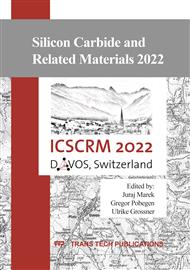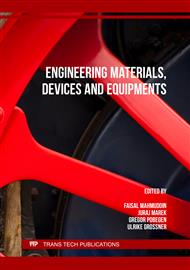p.69
p.77
p.83
p.89
p.95
p.101
p.107
p.117
p.129
650V Vertical SiC MOSFETs and Diodes with Improved Terrestrial-Neutron Single-Event Burnout
Abstract:
Silicon carbide (SiC) power devices such as Schottky diodes and metal-oxide semiconductor field-effect transistors (MOSFETs) are susceptible to failure by terrestrial neutron single-event burnout (SEB) while in the high-voltage blocking state. In this study the effects of the drift layer design of 650V SiC vertical power diodes and MOSFETs have been studied. TCAD simulations of different device designs have been performed, and fabricated device single-event burnout (SEB) properties are compared between the devices fabricated. We find that the standard 650V devices have a low area-scaled failure-in-time (FIT/cm2) such that essentially no failures (0.01 FIT/cm2) are expected at 400V drain-source bias (VDS) operation and below. An improved design allows the SEB failure rate curve to be shifted downward in failure rate, such that at for a given VDS operation condition, the FIT/cm2 can be decreased by 10 - 100 times, depending on the VDS value. This allows operation at about 75V higher VDS value with a similar SEB failure rate, allowing these devices to be used in a wider range of applications.
Info:
Periodical:
Pages:
95-99
Citation:
Online since:
June 2023
Permissions:
Share:
Citation:



